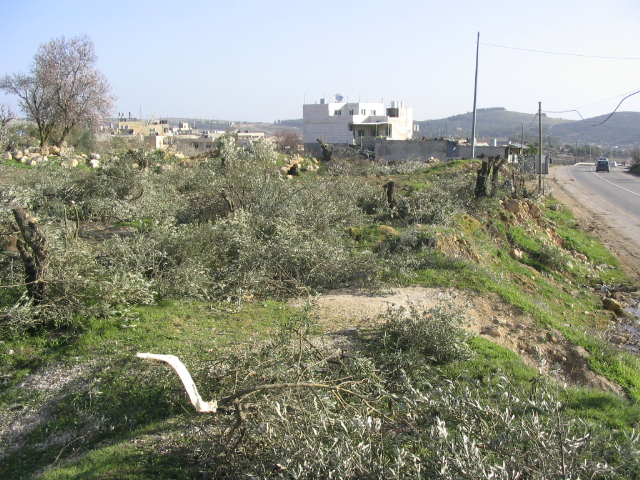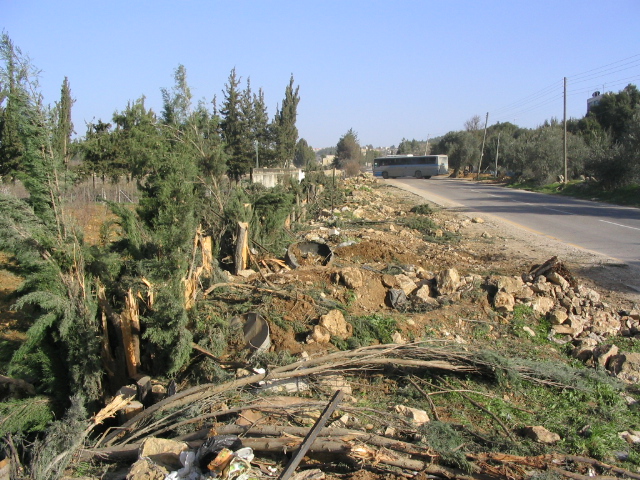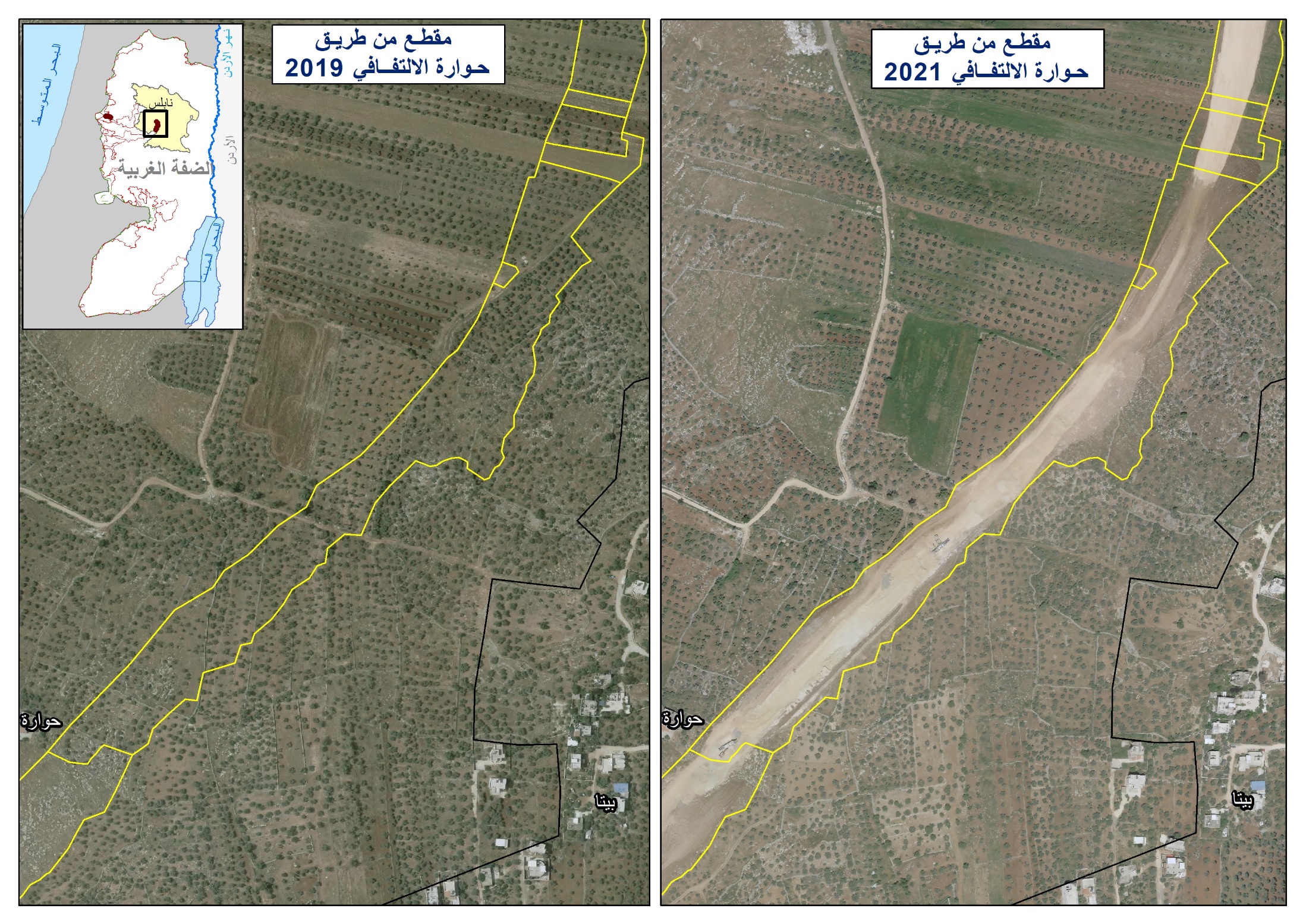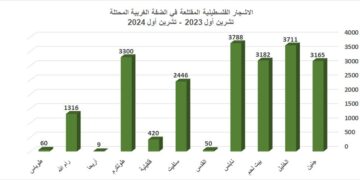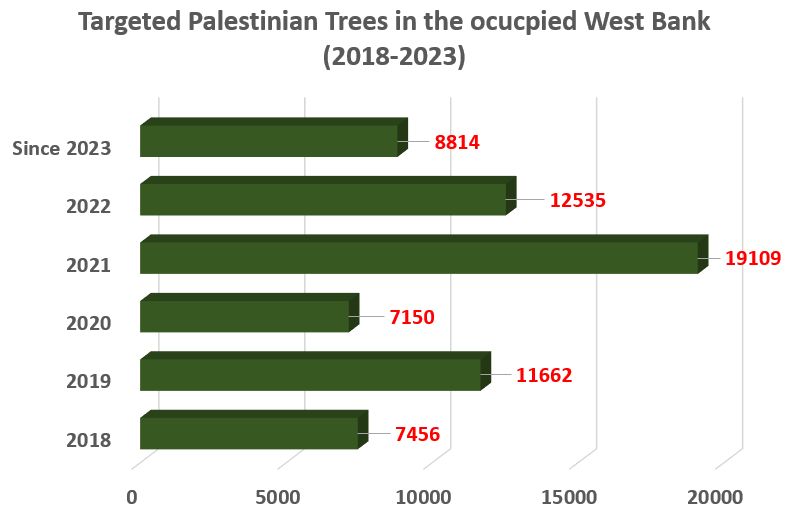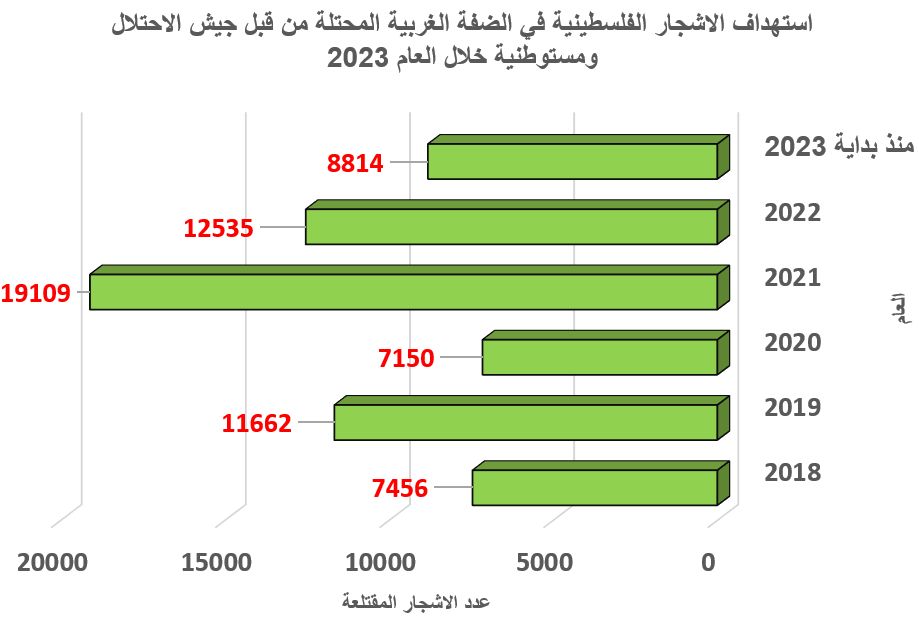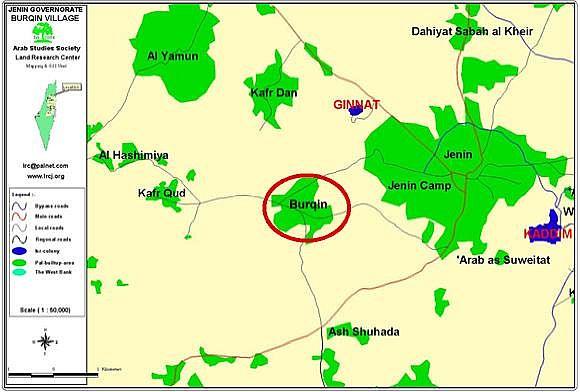Location and population
Beit Ummer town is located 12 km to the north of Hebron city. To the east of the town is Jerusalem-Hebron main road, also called Road No. 60. This road is the main artery of the city and links the northern and southern parts of the West Bank together. It is mostly used by Israeli settlers commuting between Jerusalem and mount Hebron settlements.
The town of Beit Ummer has a population of 12000 inhabitants. It is mostly dependent on agriculture as main income, particularly grapes, peaches and apples.
Al Arub refugee camp is located one km to the north of Beit Ummer, on the Jerusalem- Hebron main road. It was established by the UNRWA after the 1948 war. About 6000 people who were dismissed out of their homes in 1948 are residents of the camp. The majority of the camp's work force is employed as civil servants, mainly educators in the Palestinian Authority or UNRWA run schools.
Opposite the camp, an agricultural experiment station and college affiliated to the Palestinian Ministry of Education are located. The Jerusalem-Hebron main road (Road No. 60) passes between the camp and the college.
Type of violation
Cutting of olive and coniferous trees along Jerusalem-Hebron main road for protecting Israeli settlers traveling on this road.
Historical background
In January, 2003, the Israeli army cut more than 130 pine trees and 20 apple trees under the same pretexts, for more information, click here. Later on February 2004, the Israeli military handed over two orders: one for Beit Ummer Municipality asking them to cut 8 olive trees located on the main road, at the eastern entrance to the town; and the second order was handed to Mr. Ahmad Dudeen, head of Al- Arrub Agricultural station asking him to cut 50 coniferous trees along the main road passing the college.
The army claimed that stones are thrown at Israeli cars while using this road. Officials of Beit Ummer municipality and Al- Arrub Agricultural station didn't respond to the order.
Mayor of Beit Ummer, Mr. Rashid Awad confirmed that the trees are located out side the wall of Beit Ummer cemetery, in addition, the trees and the road are very well observed by Israeli soldiers manning the permanent military observation tower set up at the entrance of the town about four months ago. See Map of location
The town of Beit Ummer and Al Arub refugee camp ( in red circles) and road No. 60 passes by
The Mayor also went on to confirm that cutting of these trees is an introductory step towards the destruction and removal of the cemetery with the aim of expanding the road.
On his part, Mr. Dudeen, head of Al- Arrub Agricultural station stressed the fact that no stones have been thrown at Israeli cars from the target scene. Similarly, there is an Israeli military observation post from which soldiers are able to watch the road clearly. This observation post was set up opposite Al Arub camp in January last year over land confiscated from the college.
On February 24th, 2004, the Israeli army personnel cut the aforementioned trees with electric saws and forced owners to remove all the wood.
Israeli policy, in general, aims at cutting and uprooting as much as possible of Palestinian trees and destroying large areas of cultivated Palestinian land in the vicinity of main roads used by Israeli settlers and army patrols. This policy is very much implemented during the current Intifada, particularly, in Gaza Strip. It is done under the pretext of security, but the actual reason behind it is an economic one, that is, to inflict heavy losses on Palestinian farmers as part of the collective punishment being utilized against the whole Palestinian society in West bank and Gaza Strip. See Photo 1 & Photo 2
Settlers passing in their cars near the cut trees in Beit Ummer
The scene of the olive tree massacre in Beit Ummer
Picture taken by LRC field worker
Estimation of material losses
|
Type of Violation |
Total losses |
|
Destruction of 8 olive trees at the age of 50 years |
64 JD per year (calculated on the basis of 8 tree X 2 kg X 4 JD) |
|
50 Coniferous trees at the age of 60 years |
10000 kg (50 X 200 kg of wood) which equals to 10 tons of wood (10 tons X 500 NIS = 5000 NIS) |
Total material losses are estimated at: 396 + 5000 = 5396 NIS
Cut off Coniferous trees along the main Jerusalem- Hebron road near Al Arub refugee camp
The destroyed Coniferous trees and an Israeli bus
Picture taken by LRC field worker
Prepared by
The Land Research Center
LRC





